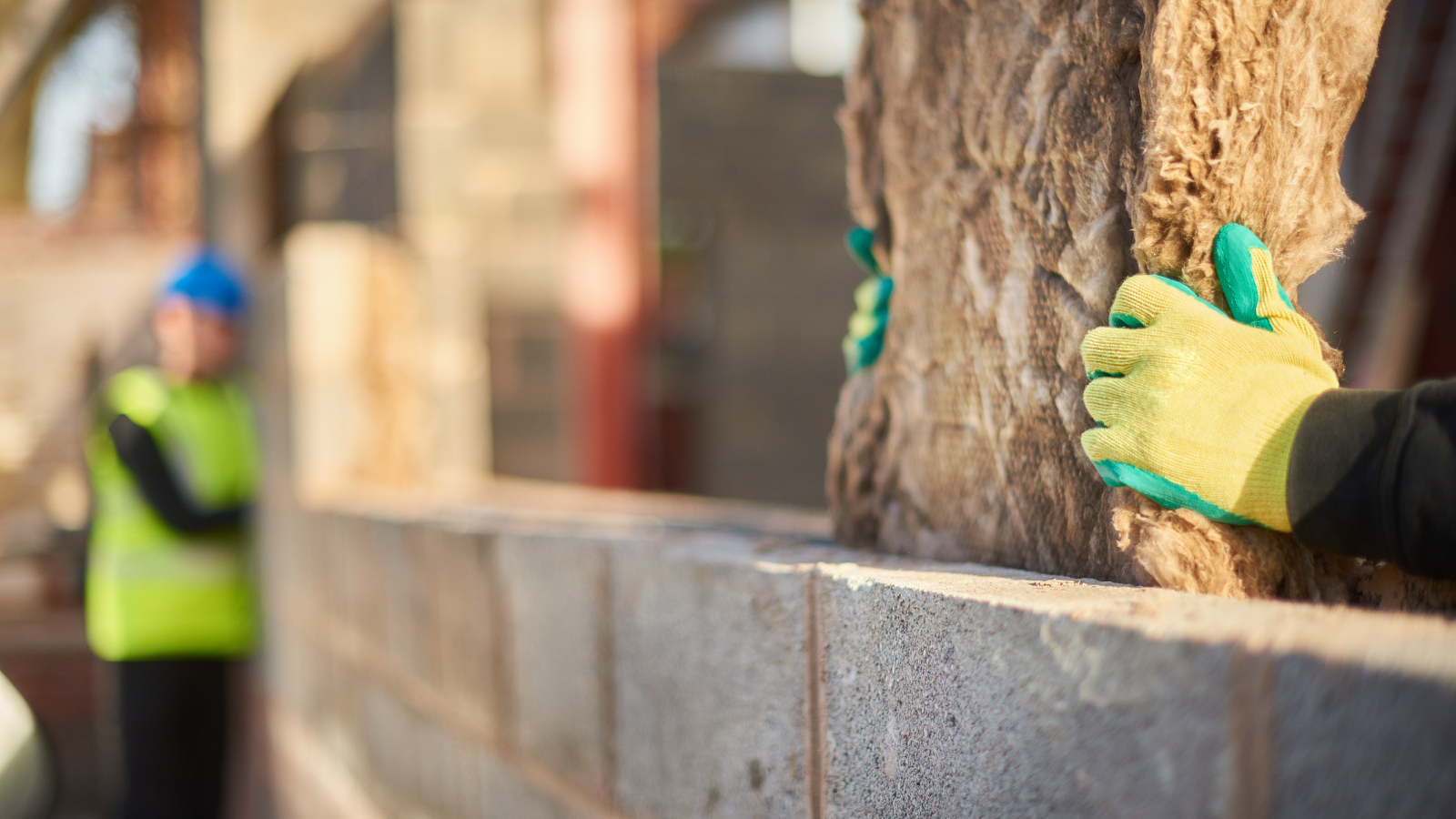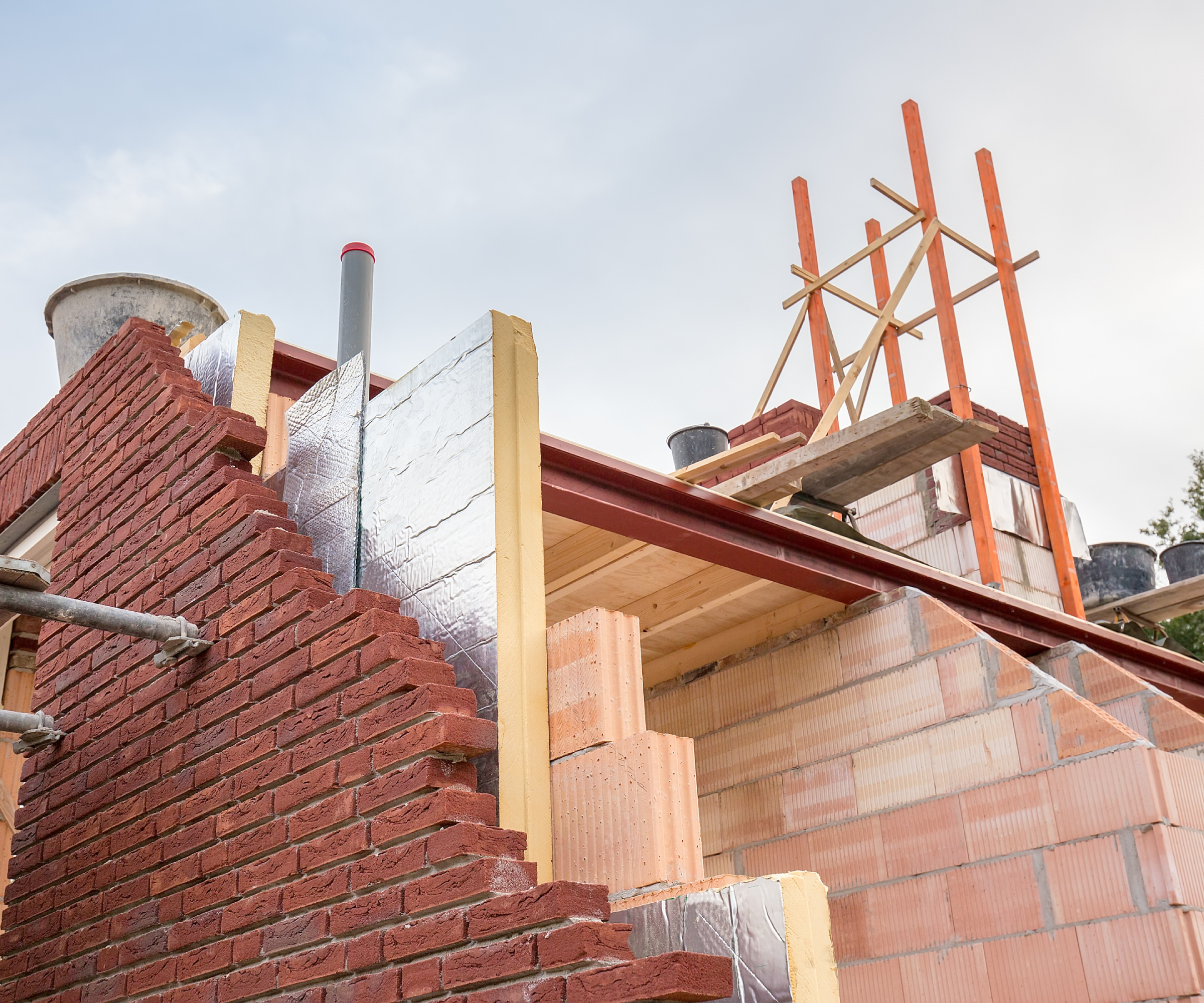Installing cavity wall insulation — an expert guide
Installing cavity wall insulation correctly will help you keep your home warm and avoid the expense that can result from getting it wrong. Here's what's involved

If you’re a self builder, installing cavity wall insulation (CWI) is crucial to keeping your home warm and energy efficient. Get it wrong and the issues can be costly to fix and will negatively affect your home's efficiency – so it's important to get it right from the outset of your build.
But what's the best practice for getting the job done – both in new homes and when considering your options for a home renovation?
In this guide we explain how much insulation you will need, how to install it correctly and what you can expect to pay.
The importance of correct installation
"There is a strong argument that a cavity wall without insulation is only half a wall. The function of a wall is to keep the weather out, which does not just mean the rain, but heat as well," says sustainable building expert, Tim Pullen. "An increasingly important function of insulating a wall is to keep the heat on the right side: inside in winter and outside in summer. Which means installing insulation, and in the right way to avoid cavity wall insulation problems."
Getting cavity wall insulation wrong can be a disaster and expensive – as the sheer position of being inside a wall can make it very difficult to access. However, on the plus side, there are only two main fundamental issues to getting this process right:
1. Using the right amount and best product: The majority of expense is in the work involved in installing it, not in the types of insulation used. The current requirement is to achieve a U value of not more than 0.18W/m2, but it’s possible that this drop to 0.15W/m2. Given the cost of energy and the whole CO2 issue, it would be wise to aim for that lower figure. However, even a U value of 0.18W/m2 figure will need 100mm of rigid foam insulation (Xtratherm, Celotex CW4000 or similar) or 170mm of mineral wool.
2. Correct installation: Install it with the same care and attention to detail that would be lavished on fitting a kitchen. Bad installation is where problems will occur – be that damp penetration or loss of thermal efficiency.

Tim Pullen, an expert in sustainable building methods and energy efficiency in residential homes is the author of The Sustainable Building Bible, Simply Sustainable Homes and Anaerobic Digestion - Making Biogas - Making Energy: The Earthscan Expert Guide. His interest in renewable energy and sustainability was first inspired by visits to the Royal Festival Hall heat pump and the Edmonton heat-from-waste projects. He formally ran energy efficiency consultancy WeatherWorks and was a speaker and expert at the Homebuilding & Renovating Shows across the country.
Installing cavity wall insulation in masonry walls
To achieve the best results when installing cavity wall insulation as part of the process of building with masonry, it's crucial to start with high-quality insulation that's free from damage and has been stored correctly on-site. Insulation boards that get wet or damaged won't work effectively.
One challenge is that insulation is typically added to the wall cavity during construction, which can expose it to moisture overnight. It's important to ensure the top of the wall is well weatherproofed as construction progresses to maintain insulation performance.
When using wall ties, plastic ones are ideal for preventing heat loss, but if not available, some bricklayers may opt for steel ties, which should not penetrate the inner wall by more than 25mm.
Then, in order to obtain a well insulated and watertight wall, self builders need to install 100mm of insulation and completely fill the cavity to maximise thermal performance and minimise the wall thickness.
Mark Stevenson, one of Homebuilding & Renovating's self build expert recommends the following tips:
- If using rigid boards, build the inner blockwork first to hold the boards in place
- For mineral wool, build the external brickwork first to keep it clean and reduce moisture risks
- Insulation boards must be fitted tight, with no air gaps and adequately supported with wall ties and retaining discs
- If necessary, joints should be taped to ensure gaps are closed
- Remove excess mortar from wall ties and joints to prevent moisture penetration
- Use foil-faced insulation boards for fully filled cavities to block moisture
- Ensure cavity closers are also insulated to eliminate thermal bridges
In addition, Tim Pullen states it's essential to, "ensure all mortar joints are filled, the bottom of the cavity is kept free of mortar droppings and all excess mortar is removed from both outer and inner skins.
"Each row of insulation boards also needs to be supported with at least two wall ties, the insulation is tight and in flush contact with the inner leaf of the wall and where possible, cuts to insulation boards to accept wall ties should be avoided as much as possible," he adds. "Where cuts are made, the gap should be filled with insulation off-cuts."


Mark Stevenson has worked as a construction professional for over 30 years. Following an extensive career in housebuilding, he is currently chief operating officer for Custom Build Homes and chair of the National Custom and Self Build Association. He previously worked as managing director for Potton, helping self builders build their own homes. Whilst Mark describes himself as a ‘professional builder’ as a result of his career in housebuilding and timber building system manufacturing, he has specialist knowledge of timber construction and extensive expertise in finding land and project management. He regularly shares his knowledge at Homebuilding & Renovating Shows and and coaches self builders about how to build their own homes.
Installing cavity wall insulation in timber frames
"When dealing with timber frame walls, you don't have to worry about fitting insulation tightly to an inner layer because the timber frame serves as that layer," says Tim Pullen.
"However, choosing the right insulation type and thickness can be a challenge. Typically, to achieve a U-value of 0.18W/m2, you'll need 140mm of rigid foam insulation, which is a standard stud thickness for timber frame construction. Thicker walls are possible but tend to be customised, especially if you're using flexible or semi-rigid insulation materials like Rockwool, wood fibre insulation, hemp or sheep wool."
Tim explains how the main issue with rigid insulation is that it's harder to install precisely because it needs to be cut to size, often leading to small gaps between the insulation and timber studs, reducing thermal performance. Semi-rigid insulation is a solution since it's cut slightly larger to ensure a snug fit, eliminating gaps and slumping, a problem that can occur with flexible insulation.
"Achieving a target U value of 0.18W/m2 may require 190mm of semi-rigid insulation, which exceeds the standard timber frame thickness," he adds. "One approach is to install 140mm of semi-rigid insulation within the stud wall and add another 50mm layer of rigid insulation on the outside of the timber frame (using rigid foam or wood fiber) with a brick, timber, or render weatherproof outer layer. This combination meets the U-value requirement and offers excellent thermal efficiency."

Retrofitting cavity wall insulation
Internal wall insulation in a renovation can be tricky because different projects vary. However, in all instances the first step is to determine if your walls have a cavity and whether there's any existing insulation.
If your house was built after 1920, it's likely to have a cavity, but it's best to consult a reputable installer who can use a borescope to inspect the wall. They will drill a small hole in the outer layer, insert a tiny camera, and visually assess the cavity's condition (if present).
This inspection also checks for any debris, like mortar droppings on cavity ties, and confirms if there's existing insulation. If your wall has a clean and empty cavity, you can proceed with injected insulation, which performs similarly to rigid foam. The use of injected insulation is dependent on the width of the cavity – likely to be 50mm – but it’s better than nothing.
Consider using a thermal imaging camera to ensure the insulation fills the entire cavity properly. "In some cases, incomplete insulation may not become apparent until later," warns Tim Pullen, "leading to issues like black mould forming around windows two years down the line."
Costs of installing cavity wall insulation
With a new build there is no extra cost to insulating a wall, as insulation must be installed as part of the overall build in order for your property to comply with Building Regulations. But when it comes to how to insulate an old home the costs can vary depending on the project.
The Energy Saving Trust tells us that cavity wall insulation can save up to around £370 a year on your energy costs and that injecting insulation to an existing wall can vary in price and can vary from around £1000 for a mid-floor flat up to £4000 for a detached home.
When it comes to making sure your cavity wall insulation is professionally installed and cost-effective is understanding that, "all cavity wall insulation must meet strict quality standards. Installers should be certified by organisations like the Cavity Insulation Guarantee Agency (CIGA)," says Mark Stevenson. "Materials must also have the necessary certifications to ensure they are fit for purpose."
FAQs
How do I avoid thermal bridges?
"A thermal bridge is a weak spot in the insulation. Essentially, it’s where a line can be drawn from the inside to the outside of a building without passing through a full thickness of insulation – or where there are gaps in the insulation," explains Tim Pullen. "It’s also where highly conductive materials (steel wall ties, steel lintels, etc) penetrate from the inside of the house to the outer leaf." For more information, head to our guide on what is a thermal bridge.
The Building Research Establishment (BRE) have stated that even a well-insulated house’s thermal bridges can account for 30% of heat loss. Such a problem can be solved with good design and attention to detail during construction and ensuring that insulation in the floor, walls and loft overlap sufficiently.
Installing cavity wall insulation is a job you really need to get right both in new and old homes. But, it's also about making sure all parts of the job are done well, so make sure you avoid this cavity wall closer mistake as well, in order to avoid any problems in the future.
Get the Homebuilding & Renovating Newsletter
Bring your dream home to life with expert advice, how to guides and design inspiration. Sign up for our newsletter and get two free tickets to a Homebuilding & Renovating Show near you.

Sarah is Homebuilding & Renovating’s Assistant Editor and joined the team in 2024. An established homes and interiors writer, Sarah has renovated and extended a number of properties, including a listing building and renovation project that featured on Grand Designs. Although she said she would never buy a listed property again, she has recently purchased a Grade II listed apartment. As it had already been professionally renovated, she has instead set her sights on tackling some changes to improve the building’s energy efficiency, as well as adding some personal touches to the interior.
